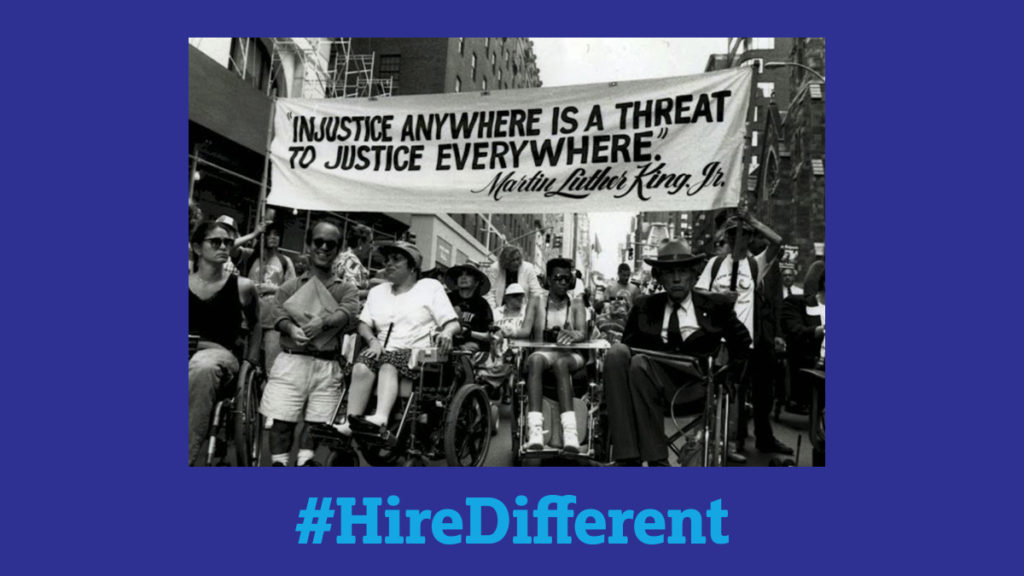By Menachem Rephun, Communications Manager and Self Advocate

Improved access to vital services; protection against unlawful workplace discrimination; a more inclusive, accessible society; all of these and more have been the focus of the ongoing disability rights movement. These promises are notably reflected in the Americans With Disabilities Act (ADA), one of the most important, consequential disability rights laws in U.S. history. More than three decades after the ADA’s passage in 1990, we can see its positive impact in advancing equity and inclusion, along with its shortcomings due to the fact that unemployment and discrimination are still severe problems for the disability community. Of course, this groundbreaking legislation would not have been possible without the vigorous advocacy of the disability rights movement, which is still in effect today. In the following article, we’ll reflect on the history of the disability rights movement, and what it means for people with disabilities in the present and going forward.
Disability Rights Advocacy: When Did It Begin?
Rather than having a single, definitive starting point, the disability rights movement evolved gradually over time, reaching its peak during the Civil Rights movement of the 1960s and the post-Civil Rights era of the 1970s. In addition to not having a definitive starting point, the movement has never been completely uniform, focusing on specific disabilities while branching off into cross-disability coalitions that include race, gender, and sexual orientation as well, as the New York Times noted in a 2020 report. The disability rights movement is still relatively young, and inclusion, understanding, and acceptance of people with disabilities are fairly recent developments. For centuries, marginalization and exclusion of people with disabilities was taken for granted as the status quo. As the Anti-Defamation League (ADL) explains in its overview of the disability rights movement, “In the 1800s, people with disabilities were considered meager, tragic, pitiful individuals unfit and unable to contribute to society… They were assumed to be abnormal and feeble-minded, and numerous persons were forced to undergo sterilization…the “purification” and segregation of persons with disability were considered merciful actions, but ultimately served to keep people with disabilities invisible and hidden from a fearful and biased society.” This bleak situation shifted in the wake of World War I, when disabled veterans returned home expecting governmental assistance with rehabilitation and vocational training. Following WWII, disabled veterans continued to bring disability rights into the forefront by pressuring the government for those same services. The rise of rubella and polio in the 1940s raised awareness of disabilities as well. Despite these early advocacy efforts, the basic accessibility that so many of us take for granted – to public transportation, telephones, stores, bathrooms, etc. – remained largely out of reach for millions of Americans with disabilities. This severe lack of accessibility, combined with rampant discrimination and anti-disability biases in employment, signified that drastic reform was both essential and long overdue.
The 1970s: Advocacy Finally Becomes Legislation
As the ADL explains, it was not until the 1960s and ‘70s that the disability rights movement proper would finally begin to take shape. The burgeoning Civil Rights movement, which championed equity and inclusion for women, African-Americans, and other disenfranchised groups, inspired disability rights advocates to become more vocal, forceful, and outspoken in demanding the same basic civil liberties for the disability community. PriorityforDisabled.org writes that this pivotal era saw disability rights advocates mobilizing to “lobby for national legislation to address the social and physical barriers that individuals with disabilities faced. Parents of children with disabilities played an important role in the movement, demanding that children be taken out of institutions and placed in public schools.” In the 1970s, that advocacy finally became translated into action with the Rehabilitation Act of 1973, Section 504 of which prohibits excluding otherwise qualified people with disabilities from any program or activity receiving Federal financial assistance, or denying them the benefits of those programs due to their disability. Section 504 also requires that U.S. public school districts provide special education and related aids and services for students with disabilities (in addition to meeting the needs of students without disabilities). That being said, there was some surprisingly early precedent for this legislation, such as the 1920 Smith-Fess Act, which established a federal program to provide vocational assistance to Americans with physical disabilities. The 1980s also gave rise to some disability rights legislation, such as the 1980 Civil Rights of Institutionalized Persons Act (CRIPA), and the Fair Housing Act of 1988, which was amended to include people with disabilities as a protected class. However, it was not until 1990 that the disability rights movement would reach its high watermark with the Americans with Disabilities Act, which revolutionized accessibility and inclusion for the disability community. History of the Disability Rights Movement
The Development And Enactment of the ADA
The development of the ADA, culminating in its signing into law under the first Bush administration, is a remarkable story that could form the basis for an entire study in and of itself. The result of almost a century of activism, the ADA was borne out of a recognition that the discrimination and marginalization faced by people with disabilities were unacceptable and could not continue. As the Disability Rights Education and Defense Fund (DREDF) powerfully explains, “The ADA owes its birthright not to any one person, or any few, but to the many thousands of people who make up the disability rights movement – people who have worked for years organizing and attending protests, licking envelopes, sending out alerts, drafting legislation, speaking, testifying, negotiating, lobbying, filing lawsuits, being arrested – doing whatever they could for a cause they believed in.” The DREDF also notes that the disability rights movement’s legislative victories in the 1980s – including reinstating the coverage of anti-discrimination provisions to all airlines, the right to sue states for violating Section 504 and ensuring the right of parents to recover attorney fees under the Education for Handicapped Children’s Act – helped improve the relationship between disability advocates and members of Congress, paving the way for the passage of the ADA. The idea for comprehensive civil rights was conceived in 1983 by the National Council on Disability, whose Chairperson, Sandra Swift Parrino, was herself the mother of two sons with disabilities. Over the next several years, Parrino, the late NCD Vice-Chair and renowned disability rights advocate Justin Dart, and staff director Lex Frieden were instrumental in drafting what would eventually become the ADA. It was clear that abstract studies and policy prescriptions weren’t enough. Legislators needed to witness firsthand that people with disabilities were actual human beings, rather than vague statistics, and that discrimination had an immediate and tangible impact on their daily lives.
To achieve this, a national campaign was initiated for people with disabilities to keep “discrimination diaries,” in which they documented instances of discrimination and inaccessibility. As DREDF explains, “The job of the disability rights movement during the ADA legislative process was to demonstrate to Congress and the American people the need for comprehensive civil rights protections to eradicate fundamental injustice -to demonstrate not only how this injustice harms the individual subjected to it, but also how it harms our society.” In a hearing before the 101st Senate, people with disabilities, including Vietnam veterans, described first-hand how their lives had been negatively impacted by employment discrimination and lack of physical accessibility. This hearing was supplemented by people with disabilities who traveled across the country, sometimes at their own expense, to meet personally with Congressmembers and to drive home the importance of the ADA. Even with these powerful grassroots efforts, the passage of the ADA was an uphill battle that was only achieved after rigorous debate. There’s no doubt that its success would not have been possible without this self-sacrifice and determination. History of the Disability Rights Movement
The Disability Rights Movement Today
As with the Civil Rights movement that sought full equality and inclusion for African-Americans, the disability rights movement stemmed from the need for representation and an acknowledgment that the Constitutional ideals of liberty and equality were not being lived up to. The story of the disability rights movement is one of incredible resolve and courage in the face of adversity to drive home the point that people with disabilities are entitled to the same basic rights as all Americans. This July will mark the 32nd anniversary of the ADA, which was the direct result of decades of tireless disability advocacy, has led to dramatic improvements in inclusion and accessibility relative to decades past, equipping people with disabilities with greater legal recourse against discrimination. At the same time, the story is far from over, as discrimination is still very persistent within many organizations, and only 12% of employers have prioritized diversity, equity, and inclusion (DE&I). What’s more, 85% of people with intellectual and developmental disabilities are unemployed or working for a sub-minimum wage. Inspired by the heroic efforts of disability advocates, Creative Spirit is determined to fully deliver on the promise of the ADA, placing at least 1 million candidates in fair-wage roles by 2030. It’s time for equality and inclusion. It’s time to #HireDifferent.






